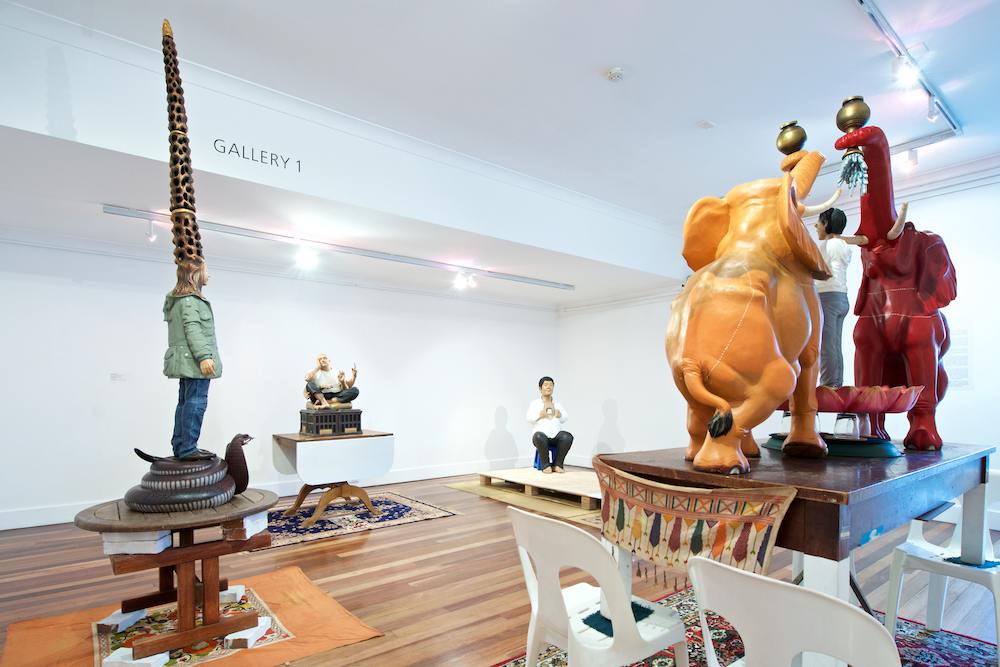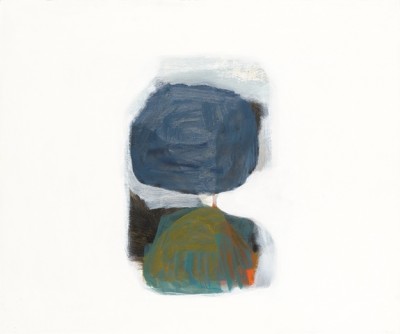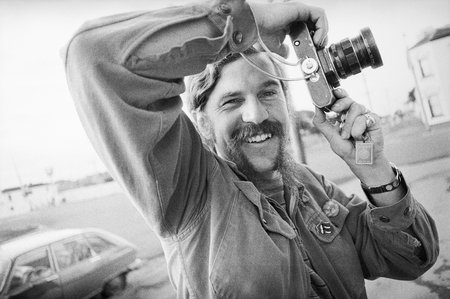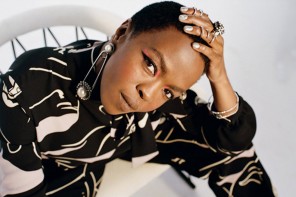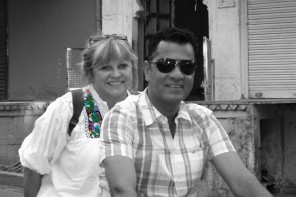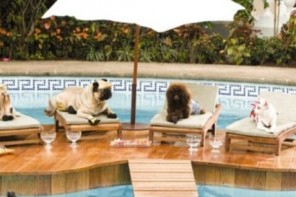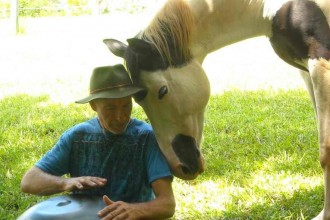From the massive to the minute, from installation to photography: It’s part of the charm – and the challenge – of running Lismore Regional Gallery, writes director Brett Adlington.
One of the joys of working in a small regional gallery is witnessing dramatic changes between our exhibitions, and also partnering with the local community to be part of our programs. A case in point is the dramatic change in the gallery spaces from our Rodney Glick exhibition to the Rennie Ellis photographic exhibition.
Rodney Glick is an Australian artist currently living and working in Indonesia. For twenty-five years he has been creating ambitious and diverse projects combining real, spiritual and imagined realms. Glick’s practice is intriguing on many levels – from his ingenuity with material, rigorous exploration of subject matter, intelligence and wicked sense of humour.
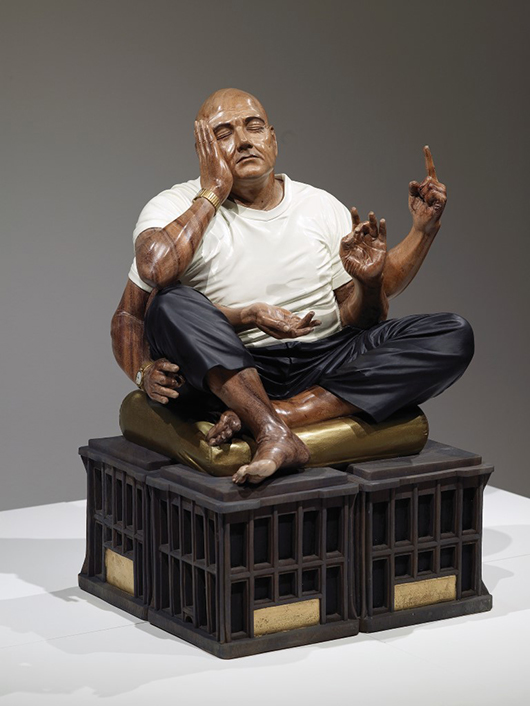
Rodney Glick: Everyone No.9, 2006-08, carved and painted wood, 75 x 40 x 40 cm, Photograph: Tony Nathan.
His practice involves creating photo shopped images of friends and family, placing them in positions referencing Hindu and Buddhist iconography. He then engages crafts people to carve these works out of wood. An astonishing sculpture is then realised.
The artist’s pun of depicting Western individuals as Eastern gods turns the traditional form he references on its head. His subjects’ appearances connect them to the here and now, so they refer to time differently from the ancient statues that inspired them. We see instinctively that Glick has captured his subjects at a moment in their lives, highlighting mortality. They appear awkward and inadequate in their god-like stances, handicapped by human frailties. Then, in the same breath, Glick’s sculptures highlight the god-likeness of human beings. The works have spiritual presence and dignity, springing from the subjects’ very humanity and the lineage of the sculptures.
At the same time, we also have a group show of abstract painting, Direction Now. The exhibition references a 1956 abstract exhibition held at Macquarie Galleries featuring the work of Robert Klippel, John Olsen, John Passmore, Eric Smith and William Rose.
Direction Now takes this defining exhibition as a launchpad, pulling together a group of abstract painters working in quite disparate ways. The group of artists includes A group of artists, including Mostyn Bramley-Moore, Terri Brooks, Miles Hall, Anton Hart, Anthony T O’Carroll, Claire Primrose, Amanda Ryan, Peter Sharp, Ann Thomson and Northern Rivers-based Michael Cusack.
Abstraction has many public faces, including but not limited to extreme expressionism, process painting, hard edge and minimalism. In Direction Now notions of technique, process, and themes relating to artists’ individual experiences and immediate environment (or identity and place) are explored. Above all, Direction Now is an exhibition which celebrates the potential of lyricism, gesture, texture and colour in non-figurative art.
Both these exhibitions close on 11 July, to be followed by documentary photographer Rennie Ellis.
Ellis (1940–2003) is a key figure in Australian visual culture,, and is best remembered for his effervescent observations of Australian life exemplified in his now iconic book Life is a beach. I recall fondly pouring through these books as a young person, when I was obsessed with photography. Although invariably inflected with his own personality and wit, the thousands of social documentary photographs taken by Ellis now form an important historical record.
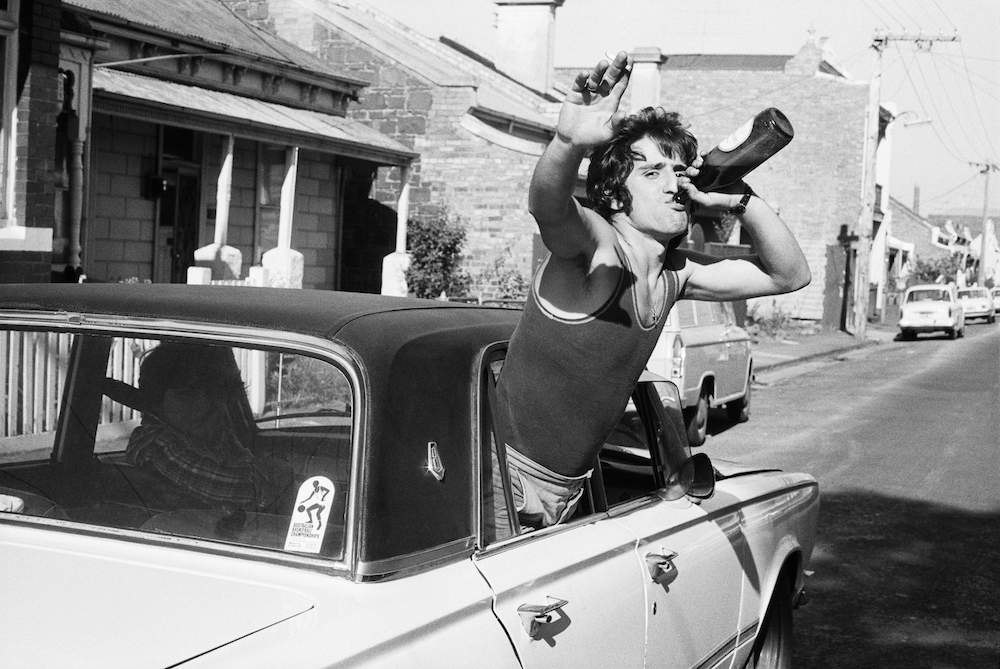
Rennie Ellis: Fitzroy extrovert 1974, selenium-toned gelatin silver print, 29.2 x 43.7 cm
courtesy of the Rennie Ellis Photographic Archive and Mossgreen Gallery.
The Rennie Ellis Show highlights some of the defining images of Australian life from the 1970s and ‘80s. This is the period of Gough Whitlam and Malcolm Fraser; Paul Keating and Bob Hawke; AC/DC and punk rock; cheap petrol and coconut oil; Hari Krishnas and Hookers and Deviates balls.
This exhibition of 100 photographs provides a personal account of what Ellis termed “a great period of change”. The photographs explore the cultures and subcultures of the period, and provide a strong sense of a place that now seems a world away; a world free of risk, of affordable inner city housing, of social protest, of disco and pub rock, of youth and exuberance.
This travelling exhibition is presented by the Rennie Ellis Photographic Archive and Monash Gallery of Art with support from the Victorian Government through Arts Victoria. To coincide with this exhibition, Lismore Regional Gallery partnered with Youth Connections North Coast to provide an opportunity for local young people to document the suburb of Goonellabah through photographic workshops.
The exhibition, G-Click, promotes the many perspectives of Goonellabah, through the eye and lens of young people attending programs with Northern Rivers Social Development Council from the Computer Clubhouse. The artists, year 8 and 9 students attending Nimbin Central School, Lismore High School, Richmond River High School and Kadina High school, took part in photographic workshops and excursions, while participating in Links to Learning, a school support program delivered by NRSDC.

